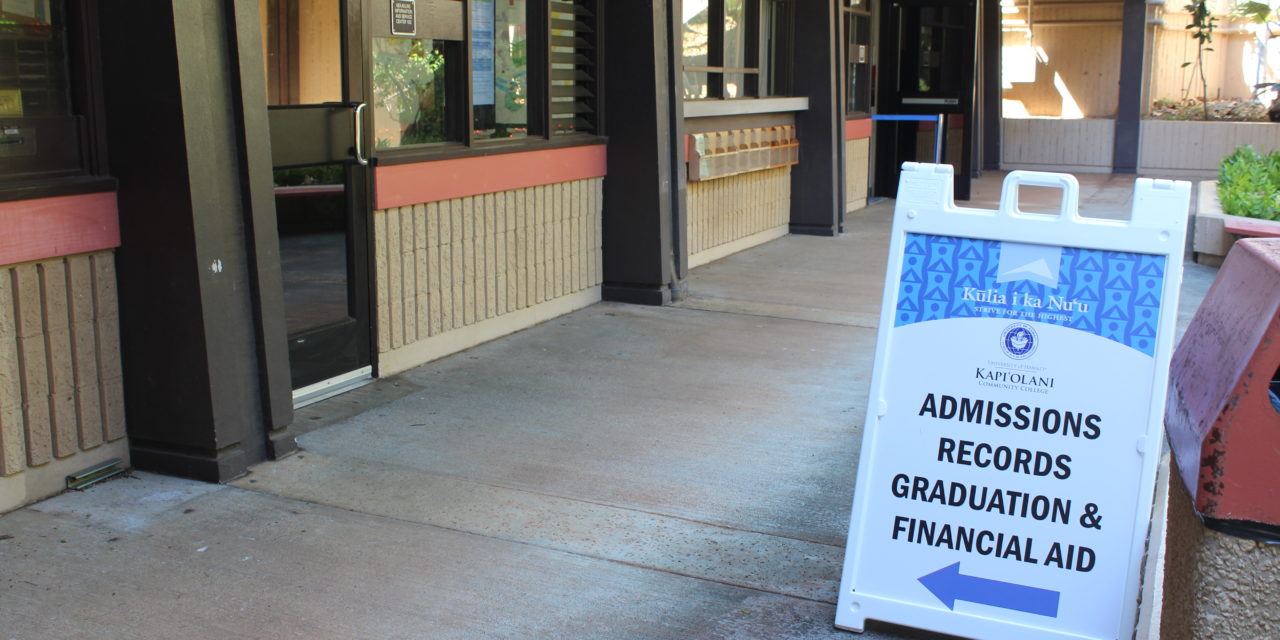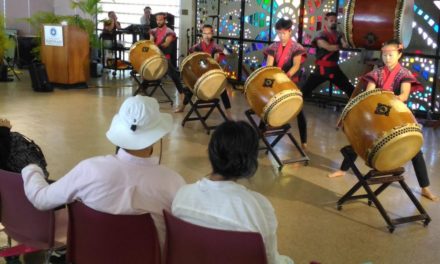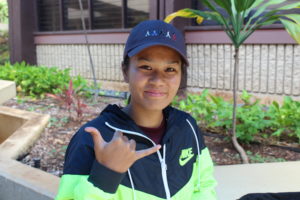By Lexus Yamashiro | Staff Writer
From November 5 to 9, registration week for the Spring 2019 semester opened for KCC students. With students scrambling to enroll in the desired classes they want, oftentimes there are terms pertaining to registration that students are unaware of or are unsure of what they stand for.
Registrar and Operations manager Jerilynn Enokawa of the Kekaulike Center for Admissions, Records, Graduation, and Financial Aid provided insight on what registration involves and how making certain decisions can impact students.
Credit and Non-Credit Courses
Courses that can be taken for credit are in line with programs that lead to long-term degrees, some of these programs being Liberal Arts, Natural Sciences, and New Media Arts. Non-credit courses fall under non-credit programs, a synonymous term Enokawa said is used for continuing education, which are designed to help students get into the job market and workforce industry quickly.
For classes that provide students with credit(s), they are given the option to change their classes to a no credit option, providing that the class allows them to take such action. Typically, Enokawa said this is only done when students feel they may be failing a class, so to prevent a drop in their GPA they complete the class without earning credits.
“[Students] need to be aware that if they do credit [or] no credit, it may not allow them to take the next level course,” Enokawa said. “We do ask, ‘Have you seen your advisor?’ because [changing credit to no credit] may delay them finishing their degree.”
Speaking to an advisor before making such a decision is recommended by Logan Halley, a First-Year Experience (FYE) counselor.
“It’s very, very important to know who their counselor is and know who to go to because I think that could … potentially be a barrier to being able to register or even register for the proper courses,” Halley said.
For the Spring 2019 semester, students have until Monday, March 25, to make a credit or no credit change.
Withdrawal (W)/Erase Period
Students have the option to withdraw/drop from a course. Students are allowed to start withdrawing approximately seven business days (nine calendar days) after the first day of instruction to receive a 100 percent refund in tuition. But, to avoid receiving a “W” on their transcript and to receive a 50 percent tuition refund, students have about three weeks after the start of the semester to withdraw.
Enokawa assured that receiving a “W” has no effect on a student’s grade point average (GPA) but can affect the look of his/her transcript when applying to a university being that several withdrawals from courses may raise questions.
Before deciding to withdraw, if students are using Free Application for Federal Student Aid (FAFSA) or a GI bill, Enokawa suggests to speak with someone from the financial aid office in ʻIlima 102 or the veteran affairs office in ʻIliahi 112 since withdrawing could affect future eligibility for money.
To see the withdrawal deadlines and period closure for Spring 2019, refer to the KCC calendar here.
Prerequisite/Corequisite Courses
If students are finding that they are unable to enroll in a particular course, it may be because they have yet to take a prerequisite. Fulfilling a prerequisite course is required for certain subjects such as English and Math since it determines whether students can move into the higher level classes.
In some cases, such as for a language class, students can take an ACCUPLACER test that will determine which level a student should be learning at. Oftentimes, scoring high on this placement test can allow students to bypass a prerequisite course.
Corequisite courses also exist, except these are classes that require students to take two classes concurrently. Enokawa said that this can be seen in instances such as MATH 78 in which it is mandatory for students to take MATH 100 simultaneously with it.
To see if a course calls for a completed prerequisite course, students should refer to the course descriptions that are provided for each course under class availability.
Waitlist and Class Cancellations
When the seats of availability for classes become full, some will show a waitlist. Students who still want to be a part of a particular class section can sign up for the waitlist providing that a student already enrolled in the class decides to drop. When this happens, the first student on the waitlist will be notified via email and is given 24 hours to register for that course. If that student fails to register within that time frame, the opening will be passed on to the next student waiting.
If a class is still full by the time the semester begins, students on the waitlist can reach out the professor and ask to overload the course.
On the contrary, classes that fail to have enough students enrolled during the registration period can get canceled. An email is sent to students when this occurs and they will have to search for another section that they could register for instead.
Registration Payments
A deadline is provided that gives students about one month after registration week to submit payments. If students are unable to pay in full, a payment plan is available that provides students with options of how they would like to break their payment up over a small period of time. In order to apply for a payment plan, a student’s tuition cost needs to be $300 or more.
The deadline to pay for Spring 2019 is Dec. 14 at 4 p.m. Anybody who still has yet to pay after that date will be purged from the classes they registered for. The only exception is for those who are waiting for FAFSA, scholarship, or GI bill money to go into their account. Those with a pending incoming source of money can notify someone within the Kekaulike Center who will be able to hold classes for students.
For questions and further assistance, students can visit the Kekaulike Center for Admissions, Records, Graduation, and Financial Aid in ʻIlima 102 or contact it at 734-9555 or kapinfo@hawaii.edu.
Editors note: In a previous version, it was stated that students have roughly three weeks to after the first day of instruction to withdraw from classes in order to receive a 100 percent tuition refund and roughly 30 days to withdraw while avoiding receiving a “W” on their transcript. Students only have approximately seven business days (nine calendar days) to drop courses for full tuition refund and about three weeks to withdraw without a “W” and for a 50 percent refund. We apologize for the inconvenience.






